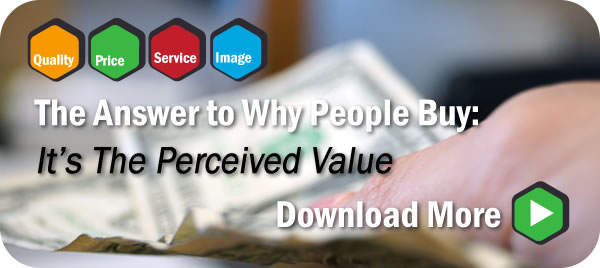By Ron Burgess
For the small business owner it’s the universal question: Why do customers buy from one company instead of a competitor? Each seems to have an answer when queried, but does one really know? Sure, the basics are understood. “I had what they wanted when they wanted it,” is certainly true, but why didn’t the customer buy across the street or online?
Many factors are included when the buyer makes the decision; most don’t really understand themselves all the reasons they buy, and this has been proven time and again by behavioral marketing researchers. Yet with all the abstractions, logic and mystery about buying behavior, one benchmark is clear enough for business strategists to start with: Perceived Value.
This is the universal measure for why buyers choose one product over another, or select one service and not another. It is so important that companies should (but rarely do) use it as the guiding beacon for everything that is done.
One notable exception demonstrates this bold statement; it is that of the second largest private company in the world, Koch Industries. Every decision they make is based on increasing value for customers and the company.
Defining Perceived Value
The word “value” is so overused by marketers that one must step back and understand the elements of value in order to make any useful discussion about it. First, however, another word must be reinforced: Perceived. In marketing only the perception of a product or service matters. The mind makes decisions (consciously or subliminally) based simply on perception and almost never on fact.
The Four Elements of Perceived Value
Value includes three elements that few ever argue with. They are Quality, Price and Service. But if one compares the same general product from two companies on quality, price and service, the outcome does not match the actual buying decision. One would think that if the quality and service were better and the price was the same that the decision would always be based on the consistent. But this is never the case.
Therefore, a fourth element must be in play: Image. Image includes brand, reputation and visual elements not easily analyzed. When you consider a buyer’s judgment or perceived quality, service, price and image, the outcome usually matches the buying behavior.
When competitors are compared, the higher value is usually the one with high marks for all of the four elements. Weak value, on the other hand, is exposed in each of the four value elements.
Visualizing Perceived Value: Value Mapping
One can more easily visualize this by mapping these four elements. Download our white paper that explains the Burgess Value Diamond.



